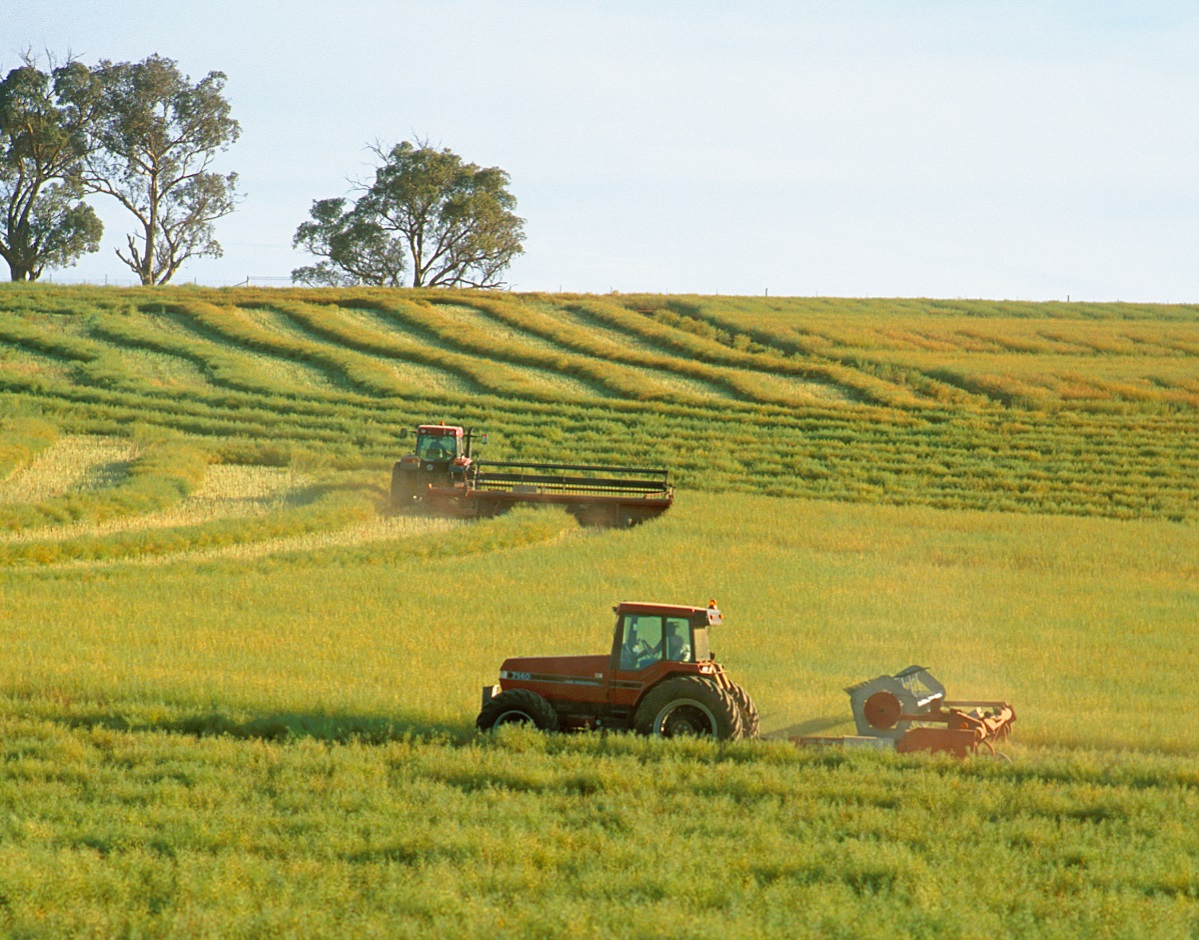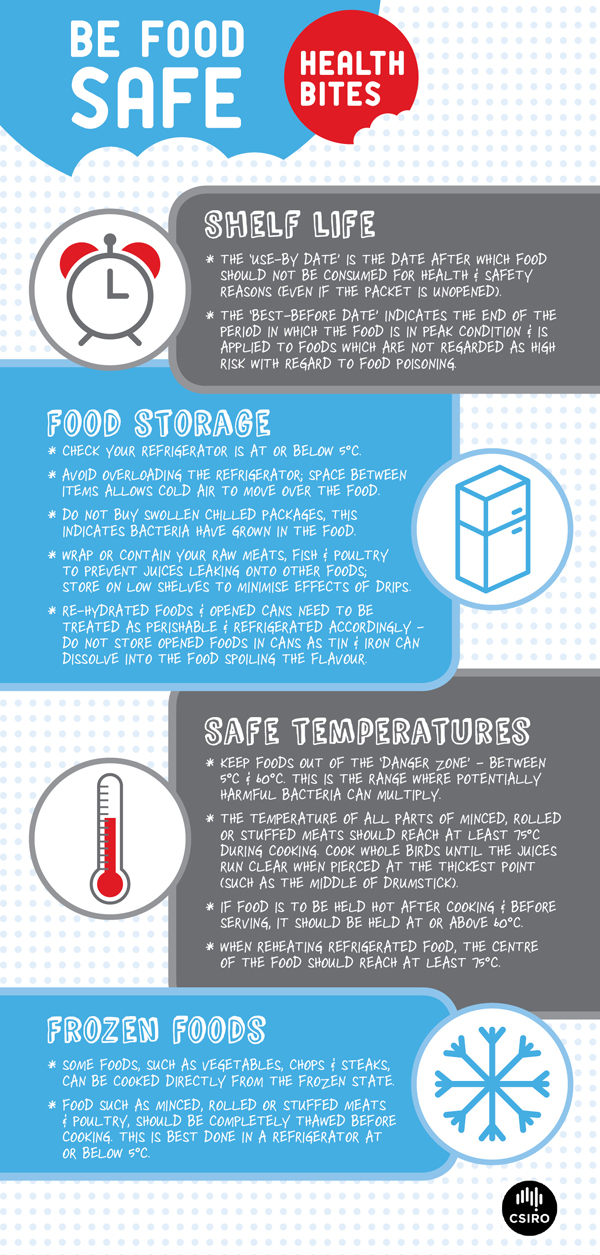
Food safety begins at the source. Harvesting Canola near Binalong, NSW.
Keeping our food safe
The recent outbreak of hepatitis A, which is thought to be associated with the consumption of frozen berries, has highlighted food safety concerns and sparked debates around country of origin labelling and testing of imported foods. Ensuring the safety of our food supply can be a complex process that involves maintaining good hygienic practices in the production and handling of foods at all stages between the farm and consumption.
With some foods, we can reduce the risk of foodborne illness through a heating process, which includes practices like cooking, canning and pasteurisation. However, with fresh produce (such as leafy green and fruits), a heating step is less desirable – we have to rely more on hygienic production to deliver a safe food product. There are quality assurance schemes in place to ensure that fresh produce is grown, harvested, packed and transported to limit contamination by foodborne pathogens.
These schemes rely on people involved in all parts of the production chain following the procedures outlined, to deliver a product that is safe to consume. Such quality assurance schemes operate across the globe and imported products are required to meet the same hygienic standards as food produced in the importing country.
Can testing of food ensure it is safe to eat?
Microbiological testing of foods is only one aspect of quality assurance schemes designed to help keep our food safe. Scientific evidence and history tells us that testing of products for pathogens is not an efficient way of determining if food has been contaminated.
This is particularly true of pathogens that occur very rarely in food (such as hepatitis A) as only a very small amount of the food will be contaminated, and we can’t guarantee we will sample the portion of food where contamination occurs. The difficulties associated with pathogen testing of foods include:
- Contamination is not evenly distributed within the food and only certain portions of the food may contain the pathogen.
- Testing for foodborne viruses destroys the portion of food that is tested.
- Because the food is destroyed during testing, not all of the food can be tested as there would be nothing left for us to eat. Only some of the food can be tested – but sampling plans have been developed to try and maximise the chances of detecting foodborne pathogens.
- Testing methods for foodborne viruses in particular can be difficult to perform, as we have to try and isolate viruses and their genetic material from foods which are often very complex in nature (containing fats, sugars and salts, which can all make it more difficult to detect pathogens).
For these reasons testing of food is only one part of quality assurance schemes, with more attention focusing on hygienic production to limit the opportunities of food becoming contaminated with pathogens.

Image credit: Pixabay.com
Why would frozen berries be at risk of carrying hepatitis A?
Freezing is a highly effective and convenient way to increase the shelf-life of foods, and unlike heat-based sterilisation techniques, it preserves most of the nutritional value of the food (some components, like vitamins, are quickly destroyed by heat). Freezing not only prolongs shelf life but also allows us to enjoy very seasonal products, such as berries, at any time of the year.
Preservation of viruses and bacteria during freezing is affected by the rate of freezing and the amounts of sugars and other molecules nearby that help to slow the growth of ice crystals. In a household freezer, water freezes quite slowly – consider the time it takes to freeze water in ice cube trays. Slow freezing favours the formation of ice crystals. As the crystals grow in size, they can kill some bacteria and viruses. On the other hand, high local concentrations of sugars and other molecules can protect the microorganisms from damage.
Frozen berries are generally safe to eat, and have only occasionally been involved in foodborne outbreaks. Hepatitis A virus infection as a result of eating contaminated food (not just berries) is also very rare, particularly in Australia where on average only five cases a year are associated with food consumption in Australia. This is very small compared to other foodborne pathogens in Australia such as Norovirus, where an estimated 276,000 cases a year are associated with food and bacteria, or Campylobacter where 179,000 cases are associated with the consumption of food.
What can we do to ensure the food we eat is safe?
It is not possible to ensure safety by testing a final product. Therefore, systems based on hazard analysis and identification of critical control points have been developed and adopted by governments and food producers through food regulations, industry guidelines and quality assurance schemes. However, human error through poor planning or poor execution can lead to one or more failures along the supply chain. The best thing we can do to ensure the food we eat is safe is to foster a culture of food safety. This means better educating all those involved in the food industry, as well as governments and consumers, so that they understand the safety risks associated with the production, manufacture and consumption of foods.Food safety needs to be seen as an investment, not a cost.
For more information, visit our website.



11th March 2015 at 6:35 am
How about having a statement on the packaging that says the product and packaging meets Australian Standards. This would cover the farm, processing and packaging of the product no matter the country of origin. It should be then upto the importers and sellers of the product to make sure their product meets the standard. And, as in the case of the berries the importer and sellers of contaminated products should immediately start paying for the care of patients and the investigation. In other words their should be no cost to the taxpayer.
2nd March 2015 at 4:37 pm
I can’t tell whether Nicholas Kachel wrote this or Dr Narelle Fegan since both have their names on it, but either way it’s a good, sensible discussion about the risk of eating food in general, irrespective of whether you know its source and history. We’ve had plenty of home-grown salmonella outbreaks; I’m drinking a cup of tea as I write this, and cannot be sure it isn’t laced with mercury or cadmium, or even if it is radioactive, or whether the milk in it is a thriving colony of helicobacter. The best we can do is have strict (and enforced) regulations about food quality, and regularly check that everyone in the chain is aware of those regulations and is following them. We probably don’t need more regulations, we need better inspection and enforcement. Unfortunately it’s cheaper to write regulations than enforce them so we can expect more food shocks in the future, especially where the food comes from countries comfortable with squalor.